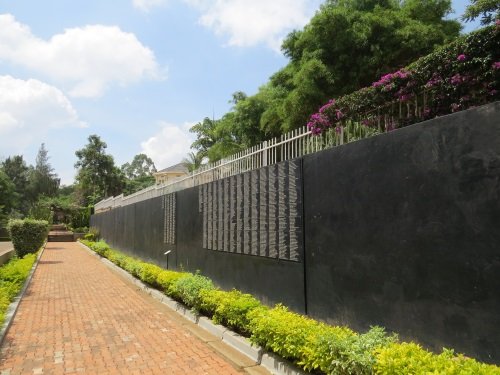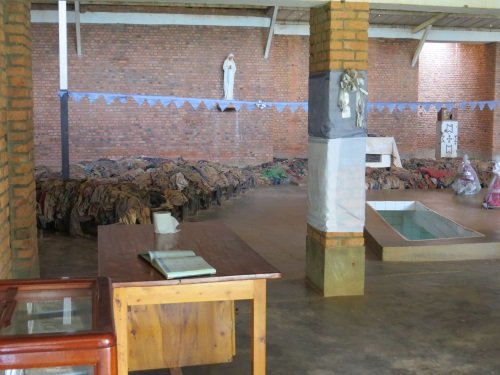Els Slots
Rwandan Genocide Memorial Sites
Rwanda has no WHS to date, and it saddens that the only entry on its Tentative List comprises the Rwandan Genocide Memorial Sites . The horrors of the Rwandan Genocide still determine the image of this small country, though it has come a long way since. The TWHS covers four locations connected with the memory of those 100 days in Spring and early Summer of 1994. Spread out over the country, they are: Nyamata (a church), Murambi (a school), Bisesero (a hill) and Gisozi (the main Genocide Memorial Center in Kigali).

|
| Remembrance wall at Kigali Memorial |
On my first morning in Rwanda I headed to the Memorial Museum of Gisozi. I got there on the back of a moto-taxi, the ubiquituous and very convenient mode of transport in Kigali. The Museum is guarded tightly, they wanted to see what I had in my backpack and pockets. Police and soldiers in the streets are a common sight in Rwanda, especially at intersections and government buildings. The Genocide Museum was opened in 2004 to commemorate the 10th anniversary of the Rwandan genocide. It consists of a building with several exhibits and an outdoor area.
Admission is free but I payed 15 US dollar for an audio guide. They even had one with commentary in Dutch. The exhibition centers mostly around information panels telling the story in Rwanda’s three national languages: Kinyarwanda, French and English. It makes clear that although the mass slaughter of Tutsis and moderate Hutus seemed like a short frenzy, a climate that has nurtured it was present since the Belgian colonial era and continued after independence in 1962. In the outdoor area around the museum around 250,000 victims are buried in a kind of monumental mass graves. There is a rose garden and small parks meant for contemplation.

|
| Elephant sculpture at Kigali Memorial - symbol of never to forget |
Day 2 in Rwanda meant another Genocide Memorial for me. I travelled by local bus about an hour north to the town of Nyamata. From the bus station it’s a short hop on a moto-taxi or a 15 minute walk to Nyamata Church (the exit is not signposted, but a nearby school named Les Colombes is). I found a modest building wrapped in purple and white ribbons. A female guide welcomed me in English and told the story of what happened at this place, which is one of the worst among the many murder locations. Some 10,000 people were killed inside the church building on April 7th, and thousands more outside of it. Tutsi had sought refuge in the church because it had acted as a safe haven during earlier outbreaks of violence before 1994.
The building shows the scars of grenade shelling and the roof is perforated by bullet holes. To remember the death, their clothes have been left to occupy the church benches – a very moving gesture despite having seen pictures of it beforehand. The clothing is now slowly turning to dust. Underneath the church and in the gardens there are mass graves. The remaining skulls and bones show the signs of killing by machete, club and gun. Local people haven’t lost their Catholic faith since ( although the foreign priests had fled long before the killings), and the proof is right across the road where this year a huge new Nyamata Church was opened. The old Nyamata Church was one of the earliest memorials in Rwanda. At first it wasn’t generally welcomed, and the Catholic Church even opposed to it.

|
| Interior of Nyamata Church |
Rwanda is still actively working on this group of sites to become a WHS. The last update I could find dates from June 2015 : it tells of the difficulties the nomination process encounters, facing opposition from some surviving relatives who do not want the remains of their family members being exposed. And also from others who feel that the memorial sites are too politically oriented. At both Gisozi and Nyamata I only encountered foreign visitors, so I asked the guide at Nyamata Church if local people come here too. She told me they do so, especially during the National Week of Mourning that is held every year from April 7-14.
More on
Els SlotsComments
No comments yet.
